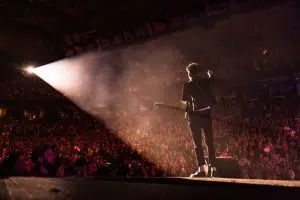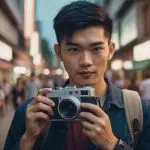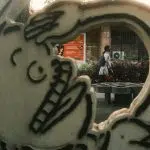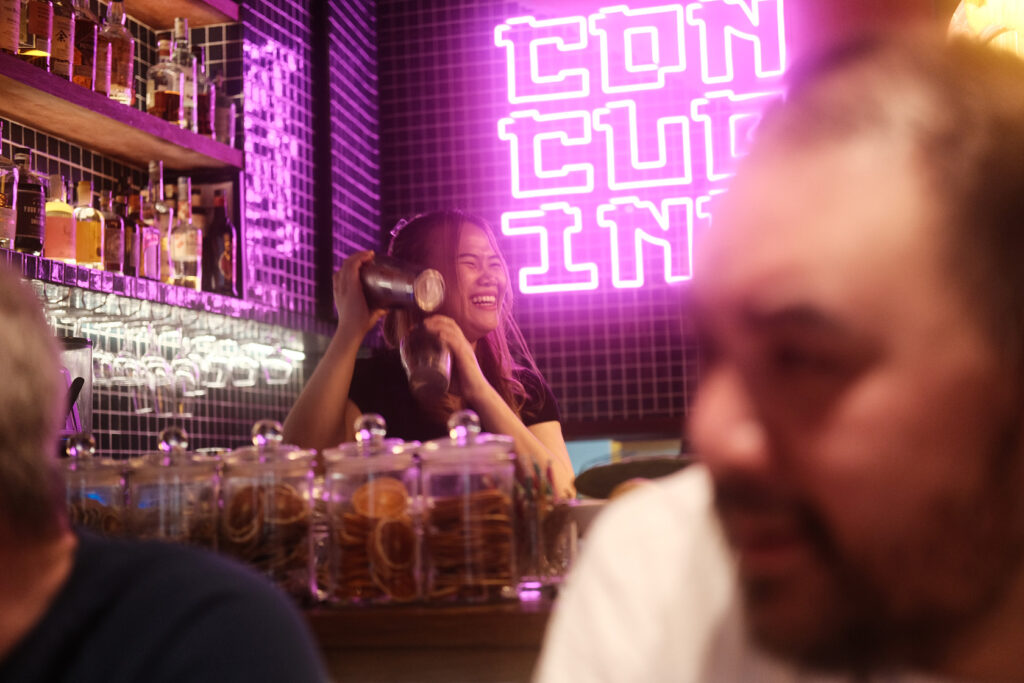Travel photography transcends simple snapshots; it’s about capturing moments that tell a story, evoke emotion, and bring distant worlds into clearer view. One of the most crucial but often overlooked aspects of taking great travel photos is timing. The best timing for photos, especially during the golden hours just after sunrise or before sunset, can transform a flat, uninspiring scene into a breathtaking image rich with light and life.
In this blog post, we’ll explore why the best time for travel photography in Kuala Lumpur is so essential, and how light, weather, and the presence of people can profoundly impact the quality of your photographs. Whether you’re a beginner aiming to enhance your travel albums or a seasoned photographer looking to refine your skills, understanding the optimal times to capture the essence of a destination will significantly elevate your photography game.
Understanding Natural Light

Photography is fundamentally the art of capturing light. The quality, angle, and intensity of light can drastically alter the mood, texture, and subject details in your photos.
Knowing how to work with natural light is key to taking stunning travel shots. In this guide, we’ll dive into essential natural lighting tips to show you how you can make the most of different times of the day:
The Golden Hour
The Golden Hour is the brief period just after sunrise or just before sunset. During these times, the sunlight is soft, diffused, and warm, offering a magical quality that is not only flattering but also dimensionally enhancing. The long shadows and golden hue provide excellent conditions for dramatic landscapes and portraits imbued with a sense of warmth and intimacy.
To help you capitalize on this enchanting time, we’ve compiled tips on the best Golden Hour photography locations around the world. For those interested in urban scenes, Kuala Lumpur offers exceptional street photography locations. In fact, exploring the photo hotspots in KL during these radiant hours ensures you can find the perfect spots to capture these stunning effects.
Morning Golden Hour: It offers a calm and peaceful light, often with fewer people around. This time is perfect for capturing landscapes and city streets bathed in soft morning hues.
Evening Golden Hour: This light is warmer and often more vibrant, ideal for capturing the bustling activities of locals, vibrant skies, and reflective waters.
The Blue Hour
The Blue Hour occurs just before sunrise and just after sunset, when the sky has a deep, rich blue hue. This time is perfect for capturing cityscapes and landmarks with a mystical or ethereal quality. The cooler tones contrast beautifully with artificial lights, which begin to flicker on as daylight fades.
Advantages of Blue Hour Photography: It’s excellent for achieving a balanced exposure with less contrast between highlights and shadows, making city lights and stars stand out against the twilight sky.
Midday Light
Often avoided by professional photographers due to its harshness and high contrast, midday light can still be used effectively with the right approach.
Using Reflectors and Filters: These can help manage the harsh shadows and intense light, especially for portrait photography.
Seeking Shade: Utilizing shaded areas can reduce the intensity of the midday sun and provide a more balanced light for both portraits and landscapes.
Each part of the day offers unique opportunities and challenges in photography. By understanding these nuances, photographers can plan their shoots to capitalize on the natural light available, enhancing the aesthetic appeal of their photos.
Seasonal Considerations

The time of year profoundly influences travel photography, with each season offering unique lighting, weather conditions, and natural phenomena that transform landscapes and dictate the mood of your photos.
Spring bursts forth with vibrant colors and delicate blooms, ideal for capturing fresh sceneries and soft light, such as Japan’s cherry blossoms or Europe’s lively meadows.
Summer provides extended daylight and stable weather, perfect for vivid landscapes and coastal scenes, particularly in sun-drenched locales like the Mediterranean.
Autumn brings a palette of warm tones with the changing foliage, offering a visual feast in regions like New England or the European Alps, where trees blaze with reds, oranges, and yellows under diffused, cloudy skies.
Winter, though challenging with its shorter days and overcast conditions, unveils serene snowscapes, dramatic cloud formations, and unique opportunities such as the mystical northern lights in Scandinavia or Canada’s snowy expanses.
Each season requires a keen understanding of its specific characteristics to effectively capture the dynamic and ever-changing beauty of nature through your lens.
Cultural and Event Timing

Photographing during local festivals and cultural events during the golden hours can add vibrant energy and authenticity to your travel photos. These events often bring out unique aspects of a culture, including traditional costumes, dances, and public celebrations that are not typically seen during other times. Here’s how to make the most of these occasions:
Local Festivals
Festivals such as Deepavali and Hari Raya in Malaysia provide rich subjects for photography, featuring bright colors, dynamic movements, and emotional expressions. These events offer a glimpse into the soul of a place through its traditions and communal activities.
Capturing the vibrant festivities, from the intricate preparations to the communal feasts, allows photographers to document and celebrate the cultural diversity and spirit of Malaysia.
Photography Tip: Engage with the environment respectfully, always asking for permission before capturing portraits. Position yourself in a spot where you can capture both the participants and the spectators to convey the full atmosphere of the event.
Daily Rhythms and Customs
Understanding the daily rhythms and customs of a location can also guide you to better photography opportunities. For instance, capturing the vibrant early morning markets in Kuala Lumpur or the serene late afternoon scenes at the paddy fields of Sekinchan can illustrate the local lifestyle and routines in Malaysia.
Photography Tip: Learn about and respect local customs and schedules. This awareness not only helps in planning your photography sessions but also ensures that you respect the community’s way of life.
Special Events
Special events such as national holidays or historical commemorations can also provide unique photographic opportunities. These are times when locals might dress in traditional attire, and significant landmarks are often decorated and lit beautifully.
Photography Tip: Research events in advance and plan your visit accordingly. Knowing the schedule and location of activities can help you find the best spots for shooting, away from the typical tourist paths.
Photographing cultural events and daily customs requires sensitivity and respect for the subject. It offers photographers a way to capture the essence of a place and its people, providing images that tell a deeper story beyond typical tourist snapshots.
Crowd Management

One of the biggest challenges in travel photography is navigating through crowds, especially at well-known landmarks. Effective crowd management can greatly enhance the quality of your photos by reducing distractions and focusing on the intended subject. In this section, we’ll explore how to avoid crowds in travel photos with several practical tactics that can help you achieve clearer, more impactful images:
Early Mornings or Late Evenings
Visiting popular sites early in the morning or late in the evening can help you avoid the peak crowds. Not only will you have fewer people to contend with, but the lighting during these golden hours in KL for travel photography is often ideal. For example, capturing the KLCC Twin Towers at sunrise not only allows for soft, diffused lighting but also fewer tourists, showcasing why these times are celebrated among photographers for their unique photographic qualities.
Photography Tip: Research the opening times of popular attractions and aim to arrive just as they open or as they are about to close. This timing often provides a window of relative calm and solitude.
Off-Peak Seasons
Traveling during the shoulder or off-peak seasons can significantly reduce the number of tourists at any given location. This means more freedom to compose your shots without rushing and the ability to capture the true essence of the place without the clutter of crowds.
Photography Tip: Look up the tourist seasons for specific destinations and plan your travel during the quieter periods. Not only will this help with photography, but it often leads to a more authentic travel experience.
Alternative Perspectives
Finding a unique angle or a less explored vantage point can also help avoid crowds in your photos. This might involve photographing from a higher elevation, using doorways or windows as frames, or simply exploring side streets and less popular areas.
Photography Tip: Use a telephoto lens to compress your scene and isolate subjects, or a wide-angle lens to capture expansive views without people cluttering the foreground.
Patience and Timing
Sometimes, managing crowds is simply a matter of waiting for the right moment. This could mean waiting for people to move out of your frame or waiting for that perfect interaction between subjects in a busy setting.
Photography Tip: Be patient and ready. Often, the best photo opportunities come to those who wait for the natural ebb and flow of people to create the right composition.
Effective crowd management not only improves the aesthetic quality of your photos but also allows you to capture more genuine and impactful images of your travel destinations.
Technical Timing Tips
Understanding the technical aspects of your camera is crucial for adapting to the varying light conditions encountered during travel. Here are some tips to help you make the most out of any lighting situation:
Camera Settings for Different Times of the Day
- Morning and Evening Golden Hour: Set your camera to capture the warm tones effectively. Use a lower ISO to keep the image clean and a wider aperture to manage the softer light. Consider underexposing slightly to retain details in the highlights, especially in the sky.
- Blue Hour: To capture the deep blues of the sky and the contrast of city lights or stars, use a tripod and set your camera to a longer exposure. This will help avoid camera shake and noise in low light conditions. A higher ISO may be necessary, but keep it as low as possible to minimize noise.
- Midday Light: Use a faster shutter speed to handle the brighter conditions. If the light is very harsh, consider using a polarizing filter to reduce glare and enhance the colors of the sky and foliage.
Natural vs. Artificial Light
- Natural Light: Always aim to use natural light to your advantage. Position yourself where the light best complements your subject, whether it’s sidelighting for texture and depth or backlighting for a silhouette effect.
- Artificial Light: In environments where natural light is insufficient, such as during nighttime or in dim interiors, understand how to work with artificial lighting. This might involve adjusting white balance settings to match the color temperature of the light sources.
Recommendations for Specific Scenarios
- Sunrise Photography: For sunrise shots, arrive early to set up and familiarize yourself with the scene as the light changes rapidly. Use graduated filters to balance the exposure between the sky and the landscape.
- Sunset Photography: During sunset, keep an eye on the sky after the sun goes down as the colors can become even more intense. Be ready to adjust your settings as the light decreases.
By mastering these technical aspects, you can ensure that your photos not only capture the beauty of your travel destinations but also display a high level of photographic skill and precision.
Conclusion
The art of travel photography and street photography in Malaysia hinges significantly on timing. By understanding and utilizing different times of the day, especially the golden hours just after sunrise and just before sunset, the changing seasons, and the cultural rhythms of your destinations, you can capture images that not only document but also tell a compelling story.
Each photograph, informed by the thoughtful consideration of light, timing, and perspective, becomes a testament to the beauty and diversity of the world around us. So, grab your camera, embrace these tips, and learn travel photography skills that will transform your travel experiences into stunning visual memories.










